Tiny Home Gardens. Tiny homes have emerged as a preferred housing option for individuals seeking to simplify their lives and adopt a more minimalist approach.
Due to the limited square footage, tiny home residents must employ innovative strategies to optimize every aspect of their living space, including their outdoor areas.
Contents
One effective method for maximizing the space surrounding a tiny home is to establish a thriving garden, which not only enhances the aesthetic appeal of the surroundings but also provides a reliable source of fresh produce and a serene escape from the stresses of daily life.
This article will delve into the various techniques tiny home gardeners can utilize to make the most of their restricted outdoor space, covering topics such as small-scale gardening techniques and the design of a cozy outdoor retreat.
Key Takeaways
- Tiny home gardens can be lush and beautiful, even in a small space.
- Small-scale gardening tips can help you grow a variety of plants in a tiny home garden.
- Transform your tiny home garden into a relaxing retreat with thoughtful design.
- Tiny home gardens contribute to eco-friendly lifestyles and sustainable living.
- Urban gardening allows you to bring the beauty of nature to your tiny home and cultivate community through garden sharing.
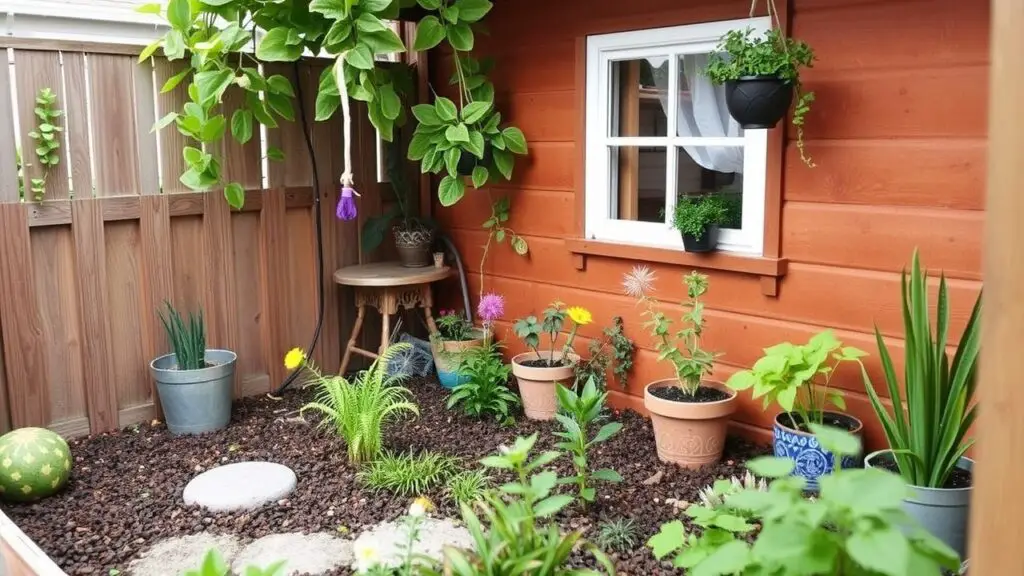
Maximizing Space: Creating a Lush Garden in a Tiny Home
Utilizing Vertical Space
When it comes to creating a garden in a tiny home, space is of the essence. With limited square footage, tiny home gardeners must think outside the box and utilize vertical space, such as walls and fences, to grow their plants. Vertical gardening allows for the cultivation of a variety of plants without taking up valuable ground space.
Maximizing Space with Hanging Planters and Trellises
Hanging planters and trellises are great options for maximizing space and creating a beautiful garden in small outdoor areas. By utilizing vertical space, you can add more plants and greenery without taking up valuable ground space.
Hanging planters can be used to grow herbs, flowers, or small vegetables, while trellises provide support for climbing plants like vines, tomatoes, or beans. These features not only add visual interest to your outdoor space but also allow you to enjoy a lush garden even in a limited area.
Raised Beds and Container Gardening
Raised beds and container gardening are great options for maximizing space in a small home garden. By using these methods, gardeners have better control over the soil quality and drainage, which can be crucial in a limited space.
Additionally, the ability to move plants around as needed provides flexibility and allows for efficient use of the available space. This can be especially helpful in a tiny garden where every inch counts. Overall, raised beds and container gardening are practical solutions for making the most of a small garden area.
Thinking Creatively for a Beautiful Garden
With some creativity and resourcefulness, tiny home gardeners can transform even the smallest outdoor spaces into beautiful and productive gardens.
By utilizing vertical gardening techniques, hanging planters, and maximizing every available inch of space, it is possible to grow a variety of fruits, vegetables, and flowers.
Additionally, incorporating compact and dwarf varieties of plants can help make the most of limited space. With careful planning and attention to detail, tiny home gardeners can create a lush and thriving garden oasis right outside their doorstep.
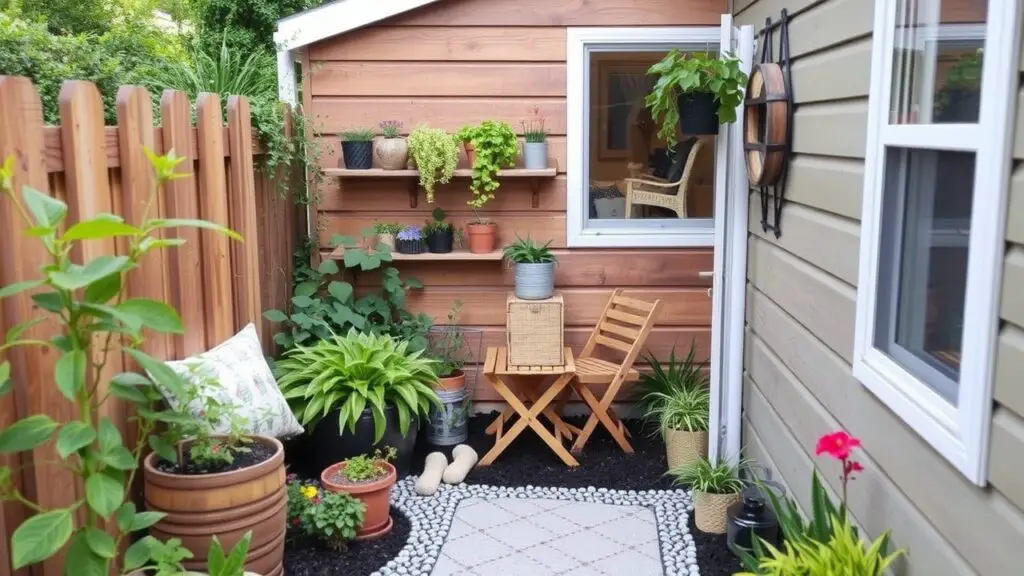
Small-Scale Gardening: Tips for Growing a Variety of Plants in a Tiny Home Garden
In a tiny home garden, it’s important to make the most of the limited space by growing a variety of plants that can thrive in small areas. One way to achieve this is by choosing plants that are well-suited for small-scale gardening, such as herbs, salad greens, and compact fruit varieties. These plants not only take up less space but also provide a bountiful harvest in a small area.
Additionally, interplanting different types of vegetables and flowers can help maximize space and create a diverse and visually appealing garden.
Another tip for small-scale gardening in a tiny home is to make use of companion planting, which involves growing different plants together that benefit each other in some way, such as deterring pests or improving soil quality. By following these tips and choosing the right plants, tiny home gardeners can create a thriving and diverse garden in their limited outdoor space.
Designing a Cozy Outdoor Oasis: Transforming Your Tiny Home Garden into a Relaxing Retreat
A tiny home garden can be more than just a place to grow plants – it can also be transformed into a cozy outdoor oasis that provides a peaceful retreat from the stresses of everyday life.
By incorporating elements such as comfortable seating, soft lighting, and water features, tiny home gardeners can create a relaxing and inviting space that is perfect for unwinding and enjoying nature.
Adding potted plants and hanging baskets can also help create a lush and vibrant atmosphere, while incorporating natural materials such as wood and stone can add warmth and character to the outdoor space.
By carefully designing and decorating their tiny home gardens, residents can create a tranquil retreat that enhances their overall living experience.
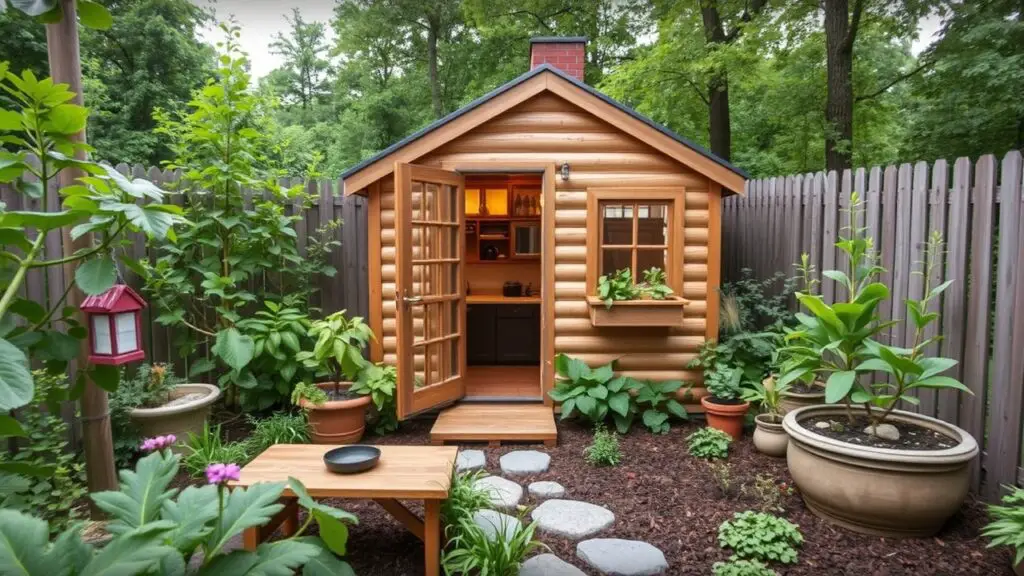
Sustainable Living: How Tiny Home Gardens Contribute to Eco-Friendly Lifestyles
Tiny home gardens play an important role in sustainable living by providing a source of fresh, locally grown produce and reducing the need for store-bought fruits and vegetables that are often shipped long distances.
By growing their own food, tiny home gardeners can reduce their carbon footprint and contribute to a more eco-friendly lifestyle. Additionally, many tiny home gardeners choose to use organic gardening methods, such as composting and natural pest control, which further reduces their impact on the environment.
By embracing sustainable gardening practices, tiny home gardeners can make a positive impact on the planet while enjoying the benefits of fresh, healthy produce right outside their door.
Urban Gardening: Bringing the Beauty of Nature to Your Tiny Home
Bringing Nature to the City
For those living in urban areas, tiny home gardens offer an opportunity to bring the beauty of nature into their everyday lives. Even in the midst of concrete jungles, tiny home gardeners can create green spaces that provide a sense of tranquility and connection to the natural world.
Supporting Biodiversity
By incorporating plants that attract pollinators and wildlife, such as butterflies and birds, tiny home gardeners can create an urban oasis that supports biodiversity and enhances the surrounding environment.
Sustainable Urban Gardening
Additionally, urban gardening allows residents to grow their own food in a sustainable and environmentally friendly way, even in the midst of a bustling city.

Cultivating Community: Connecting with Others Through Tiny Home Garden Sharing
Tiny home gardens have the potential to bring people together and foster a sense of community among neighbors. Many tiny home communities have embraced the concept of garden sharing, where residents come together to cultivate and maintain shared garden spaces.
This not only allows for the pooling of resources and knowledge but also creates opportunities for social interaction and connection with others who share a passion for gardening.
By working together to create and maintain communal gardens, tiny home residents can build strong relationships with their neighbors and create a sense of belonging within their community.
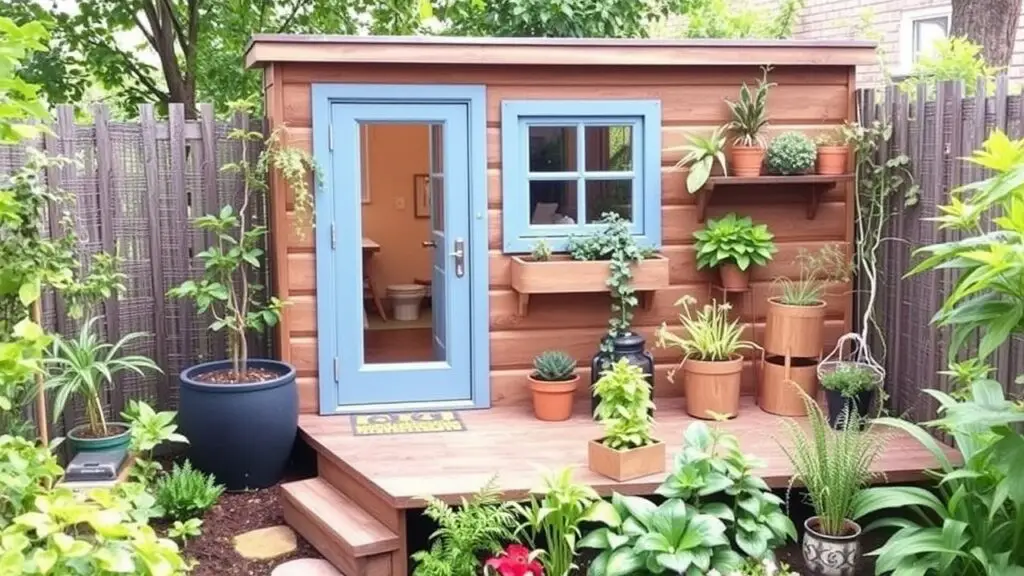
The Benefits of Tiny Home Gardens: Enhancing Health and Well-being in Small Spaces
In addition to providing fresh produce and a connection to nature, tiny home gardens offer numerous health benefits for their caretakers. Gardening has been shown to reduce stress, improve mood, and promote physical activity – all of which contribute to overall health and well-being.
In small spaces where outdoor recreation may be limited, having access to a tiny home garden provides an opportunity for residents to engage in meaningful and fulfilling activities that promote mental and physical wellness.
Furthermore, growing one’s own food allows for greater control over what goes into one’s diet, leading to healthier eating habits and improved nutrition.
By cultivating a tiny home garden, residents can reap the many benefits that come with tending to plants and connecting with nature right outside their doorstep. In conclusion, tiny home gardens offer countless opportunities for creativity, sustainability, community building, and personal well-being.
By maximizing space, embracing small-scale gardening techniques, designing an inviting outdoor oasis, and connecting with others through shared gardening experiences, tiny home dwellers can enjoy the many benefits that come with cultivating their own little piece of paradise.
Whether living in an urban environment or a rural setting, tiny home gardens provide an opportunity for residents to connect with nature, promote sustainable living practices, and enhance their overall quality of life in small spaces.
Top pick
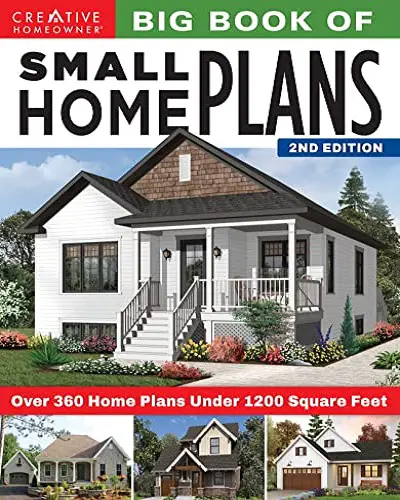
Editor’s choice
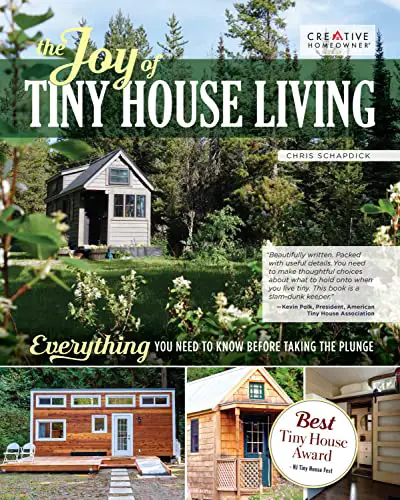
Best value
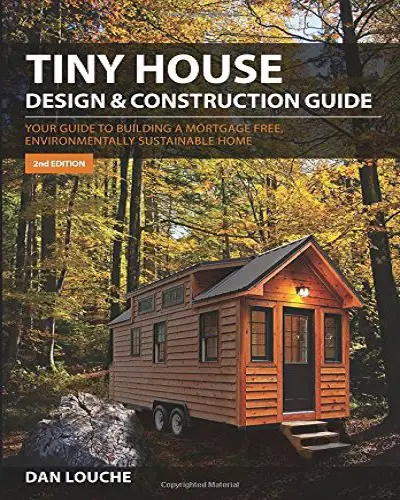
FAQs
What is a tiny home garden?
A tiny home garden is a small-scale garden designed to be grown in a limited space, such as a tiny home, apartment balcony, or small yard.
What can be grown in a tiny home garden?
A variety of plants can be grown in a tiny home garden, including herbs, vegetables, fruits, and flowers. Popular choices for tiny home gardens include tomatoes, peppers, lettuce, basil, and strawberries.
What are the benefits of a tiny home garden?
Some benefits of a tiny home garden include access to fresh, homegrown produce, the opportunity to engage in a relaxing and rewarding hobby, and the ability to reduce food costs and waste.
How can I start a tiny home garden?
To start a tiny home garden, you will need to consider the available space, sunlight, and climate conditions. You can then choose suitable containers or raised beds, select the appropriate plants, and provide them with the necessary care and maintenance.
What are some tips for maintaining a tiny home garden?
Some tips for maintaining a tiny home garden include regularly watering and fertilizing the plants, monitoring for pests and diseases, and providing adequate sunlight and ventilation. It’s also important to harvest the produce when it’s ripe and to prune and trim the plants as needed.

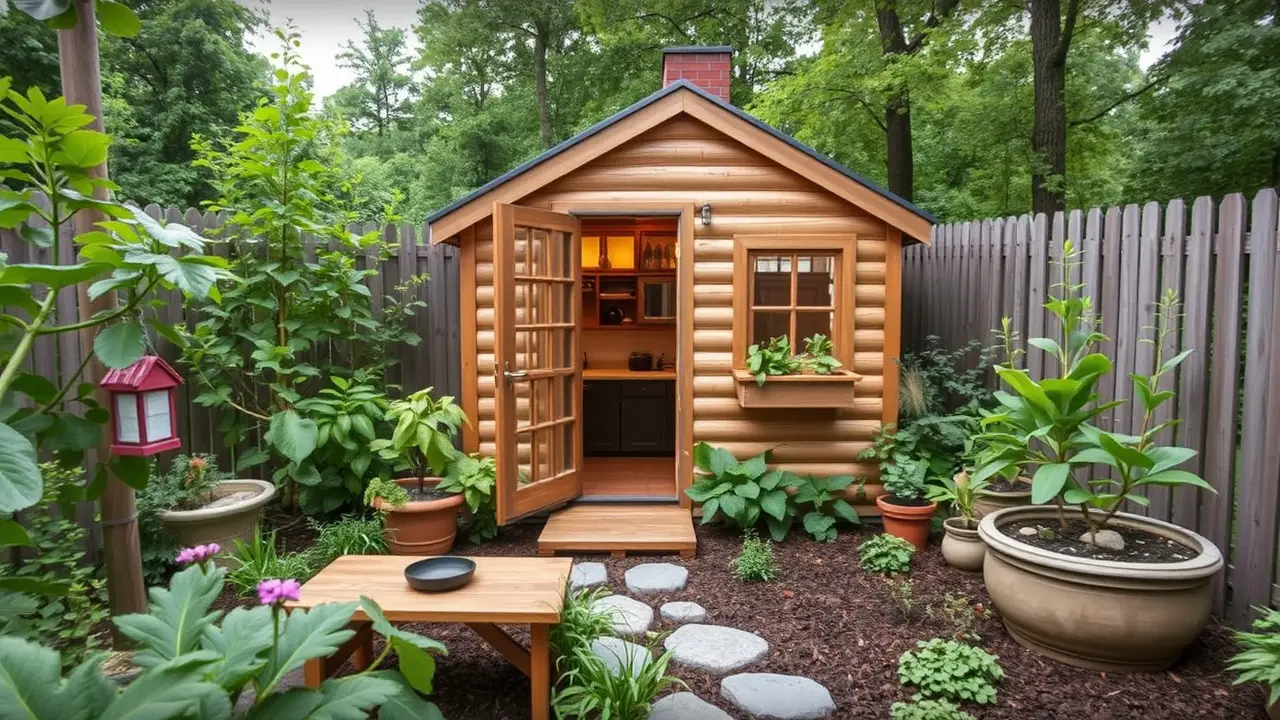
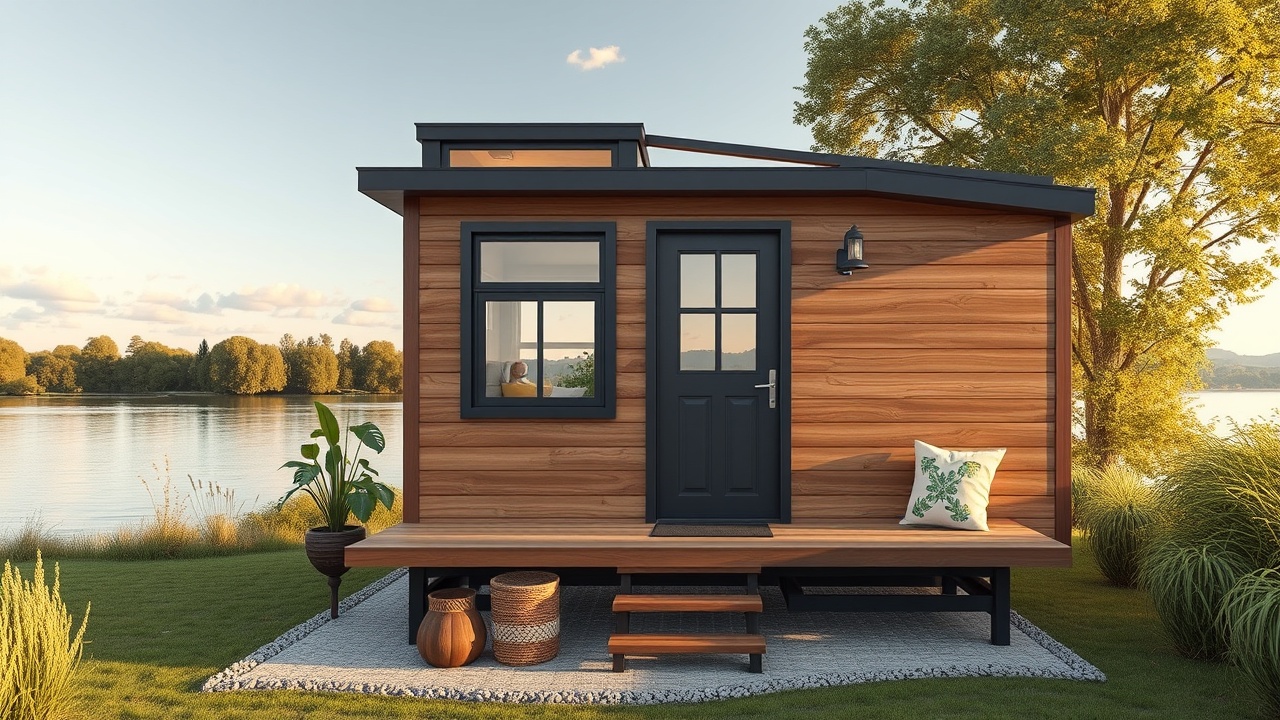
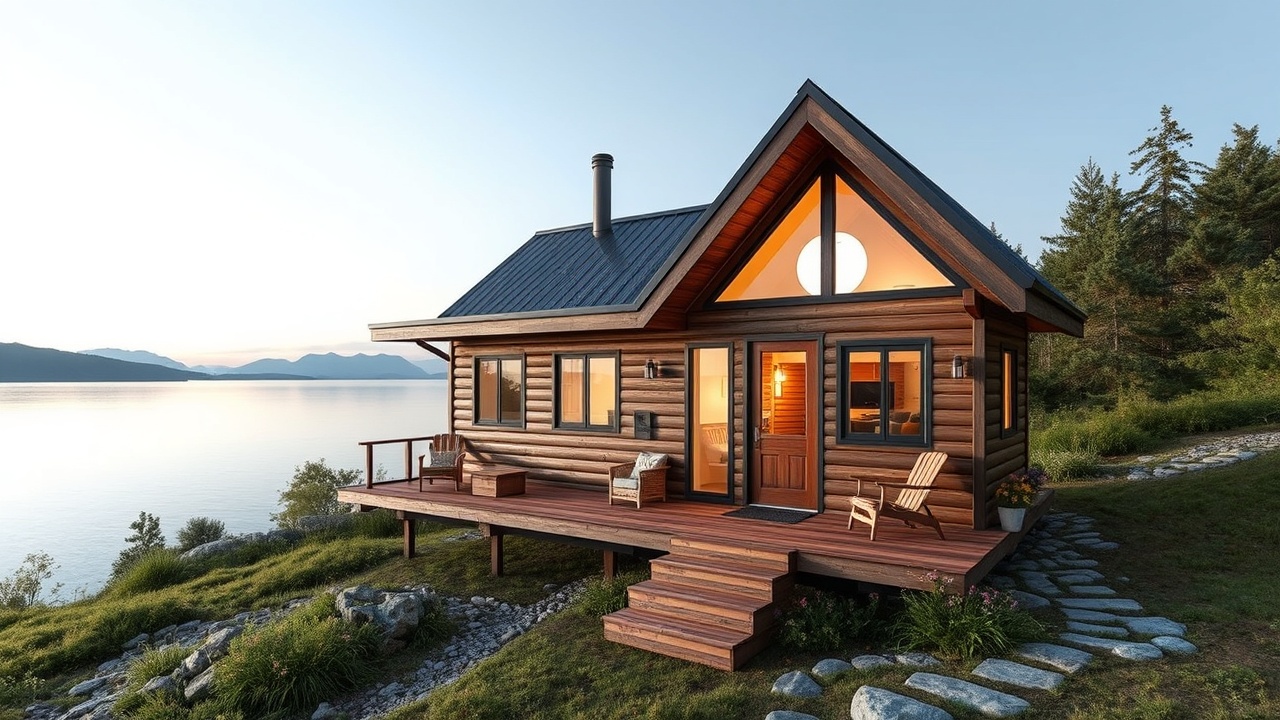
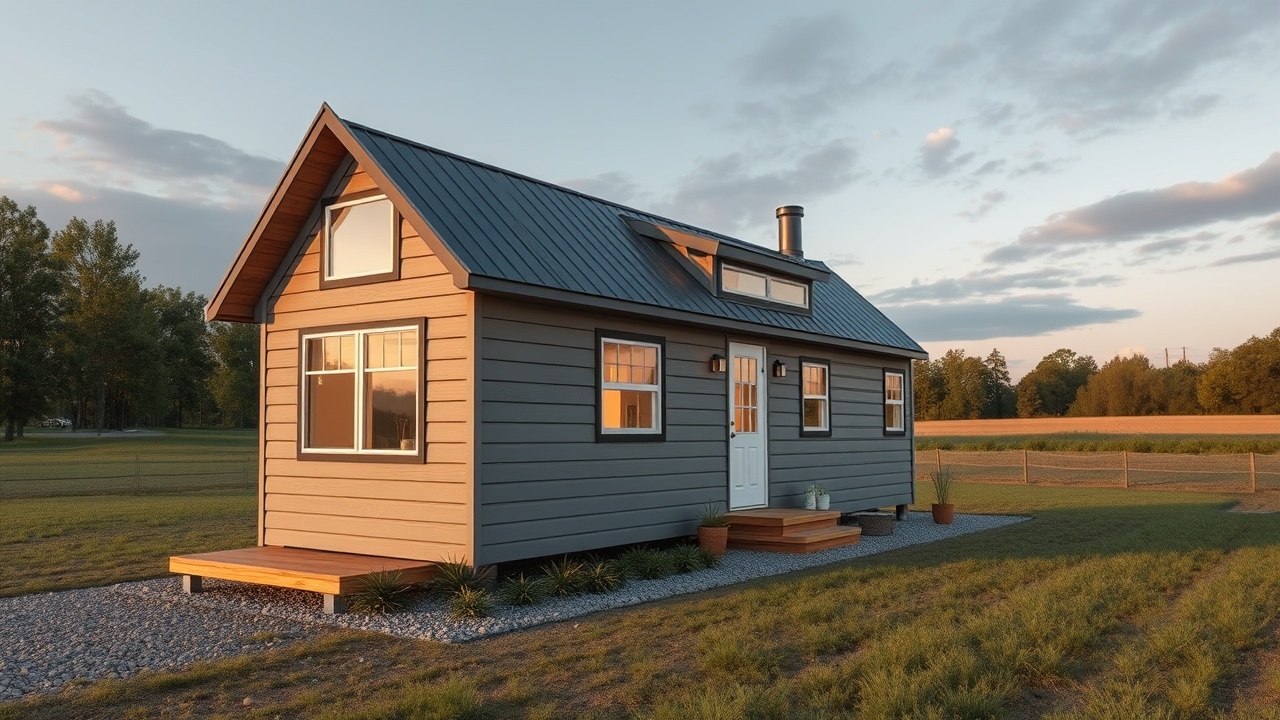
Leave a Reply